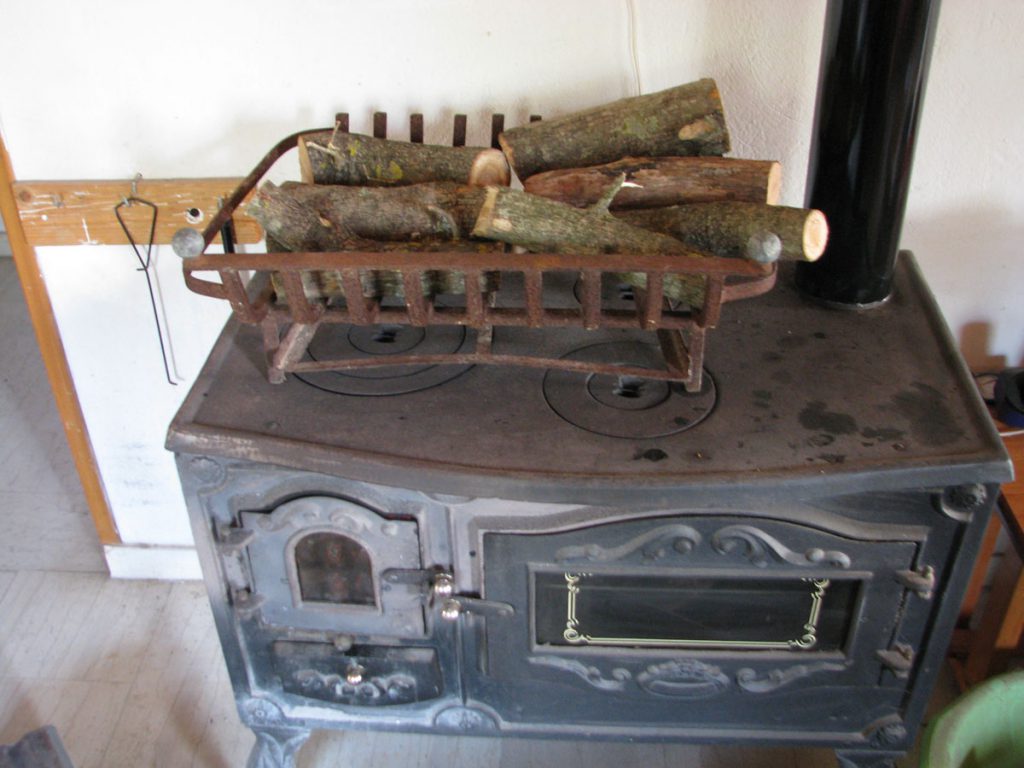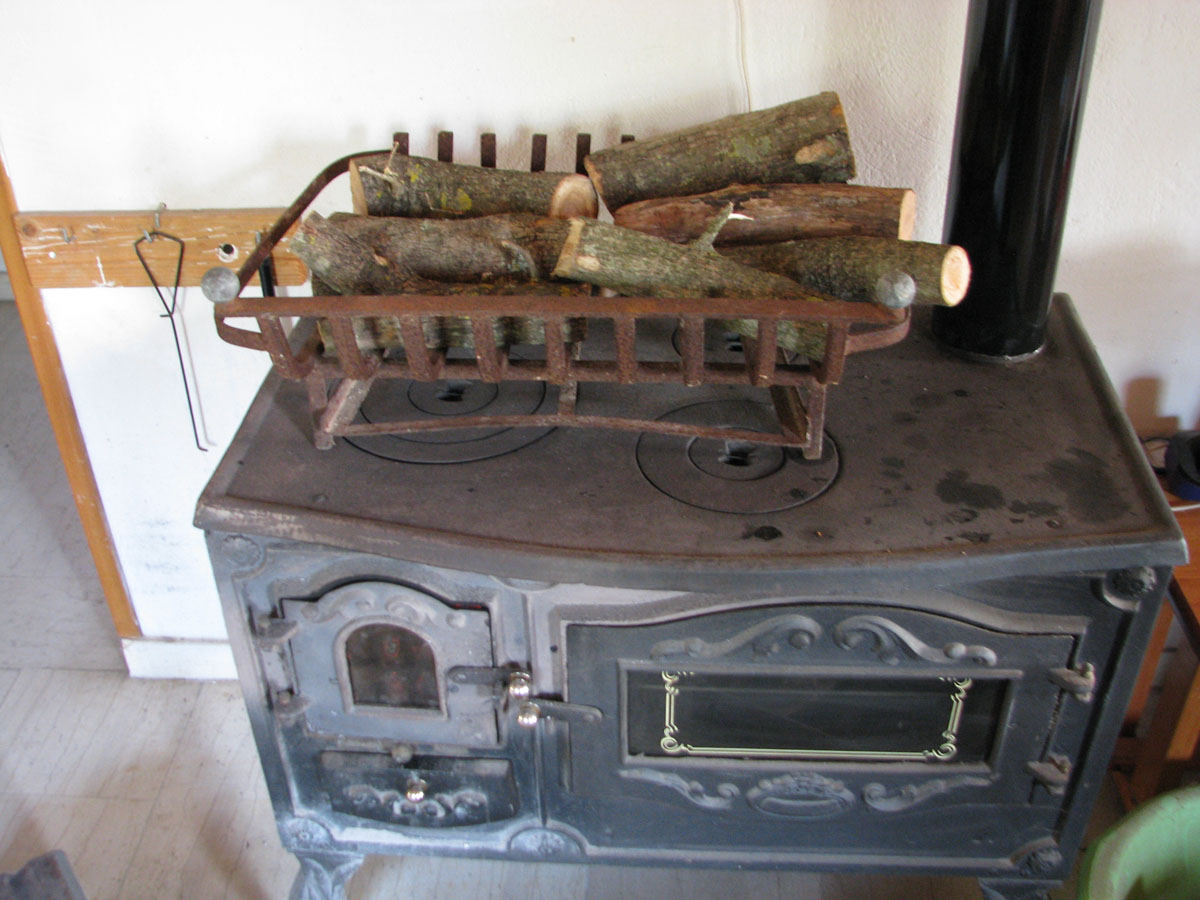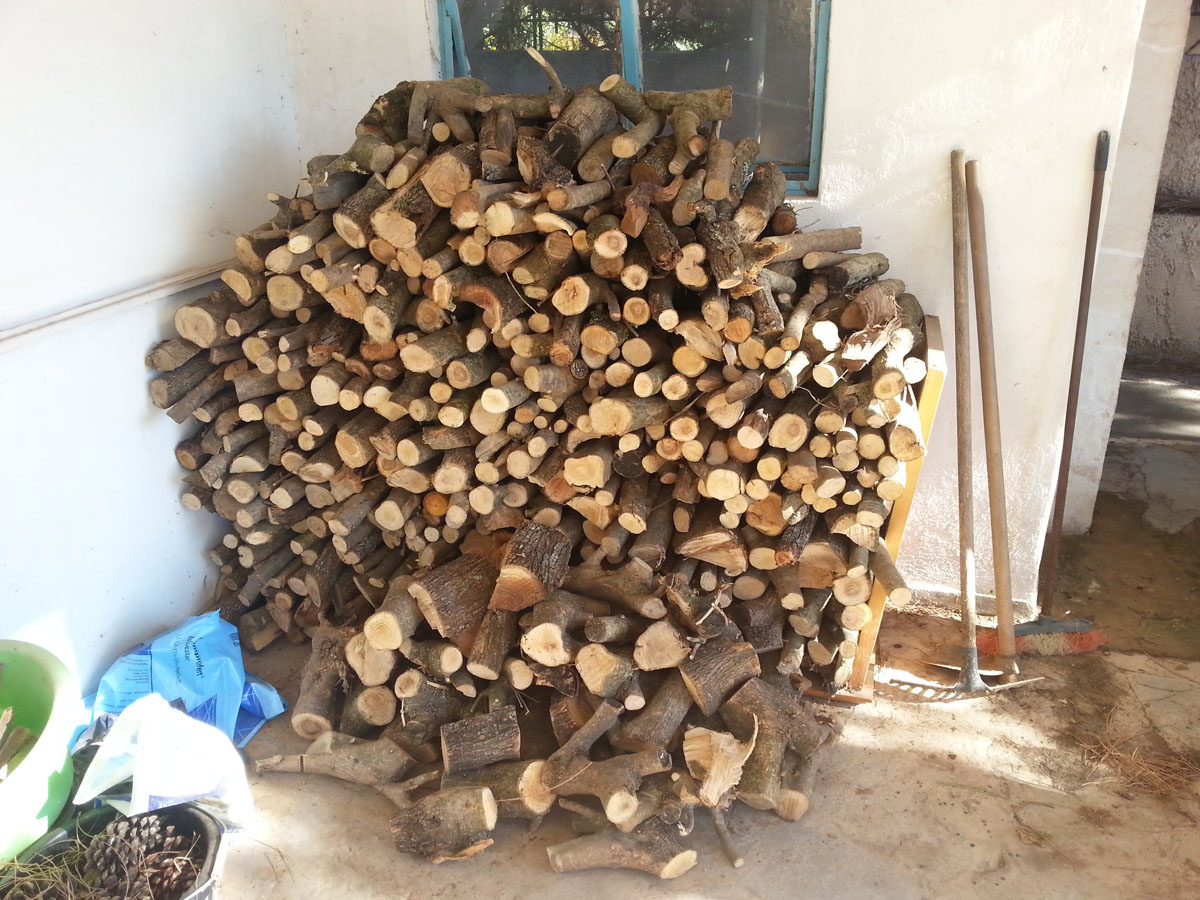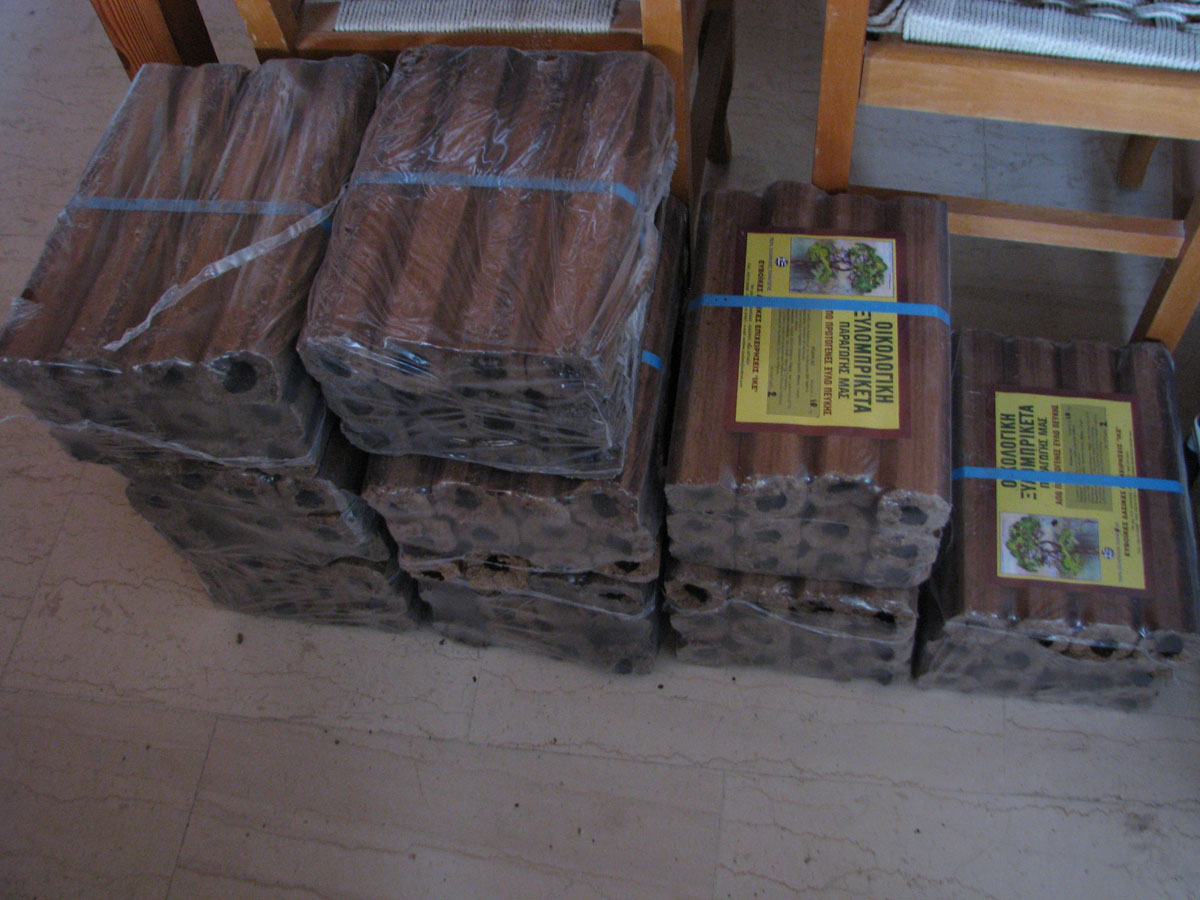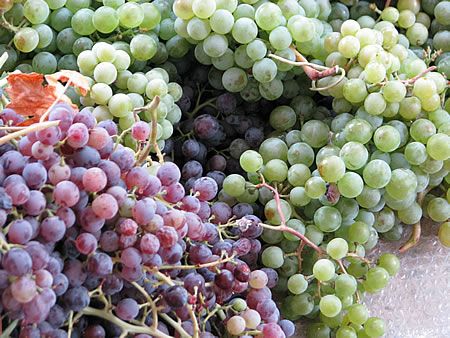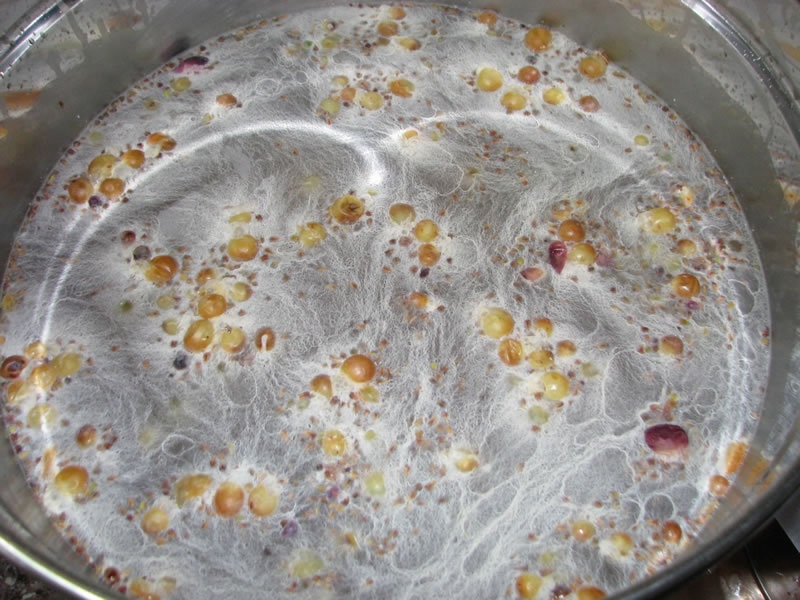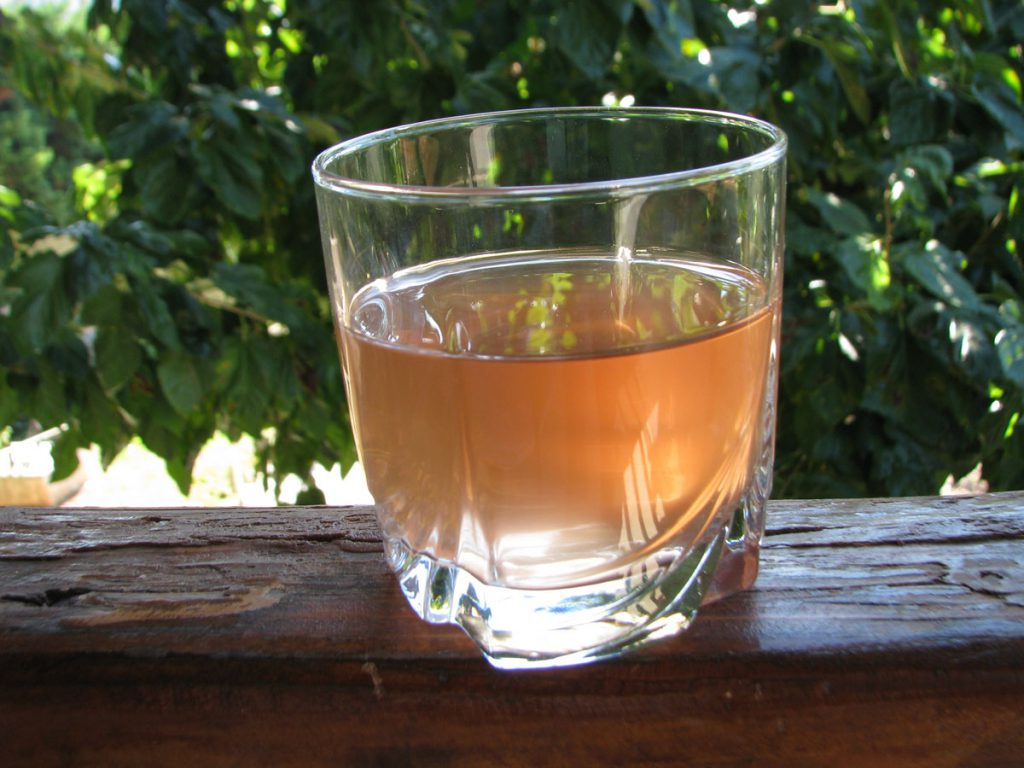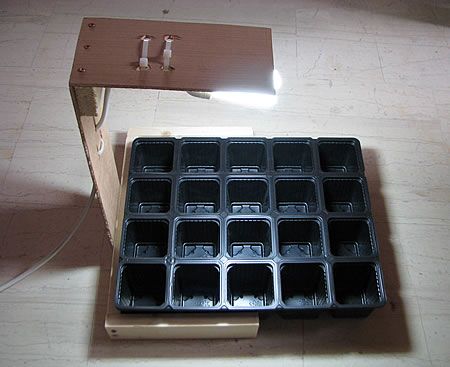This article describes what I learned from experiencing problems with the wood stove and the flue pipes. What I learned about stoves, logs and firewood.
At our cottage we have been using a cast iron wood stove for heating for many years. The wood stove heats effectively if set up correctly and is economical.
Length of horizontal flue pipes
What should be the maximum length of horizontal flue pipes?
The length of the horizontal flue pipes is important for the correct “pulling” of the stove. If the stove does not “pull” properly then the combustion is not efficient and smoke comes out into the room.
According to foreign standards, the length of the horizontal flue pipes should not exceed 1.5 times the length of the vertical flue pipes.
For example, if you use 5 meters of vertical flue pipes (including the outside part of the flue), inside you should have a maximum of 5 * 1.5 = 7.5 meters of horizontal bolts.
I am referring to Canadian and, American standards because I have not been able to find any guidelines or standards from an official Greek source.
If the length of the horizontal flue pipes is longer than 1.5 times of the vertical ones then the exhaust gases from the burning of the wood (firewood) are liquefied inside the flue pipes.
The liquefaction leads to oxidation of the flue pipes, which results in their destruction.
Until they are destroyed and need to be replaced, small holes are created through which dangerous exhaust gases escape.
If the joints between the flue pipes are not well sealed you will see black liquid dripping from them staining the floor.
How many corners on the flue pipes?
The optimum number of 90 degree corners on the flue pipes is only 2. More corners create a lot of problems and prevent proper attraction (“pulling”) of exhaust gases.
Keep in mind that the corners are where the greatest accumulation of combustion residue occurs.
The corners are the first to clog and need cleaning for proper attraction.
What slope should horizontal flue pipes have?
For the wood stove to operate optimally, the horizontal flue pipes should have a 10% upward slope.
The part where the flue pipes comes out of the house into the chimney should be 10% higher than the first horizontal flue pipe closest to the stove.
The difference in slope helps the stove operate better.
When I open the door to put wood in the stove, smoke comes out
This means that the stove is not “pulling” properly. There is not enough flue gas attraction.
What could be the problem?
There are two most likely reasons why smoke comes out every time you open the wood stove door.
Flue pipes are clogged. Clean them out.
The ash pan under the combustion chamber is full. Empty it.
How to clean the flue pipes
Cleaning the stove flue pipes is not an easy task. Unfortunately…
Personally, I disassemble the flue pipes.
I take them out of the house.
I beat them to get rid of a lot of the debris inside.
I then use a special brush to scrape the inside and remove the combustion residue (creosote) that has settled inside.
I then reassemble the flue pipes and seal the joints with silver or brown metal tape.
I do this every summer so the wood stove is ready for winter.
It’s not an easy task nor is it a pleasant one.
The payoff is getting the wood stove working properly in the winter.
Material flue pipes are made of
You will find various qualities of flue pipes on the market.
You will find stainless steel single-wall flue pipes.
You will find enameled single-wall flue pipes.
You will find cheap single-wall flue pipes that look like stainless steel while they are not.
You will find more expensive insulated flue pipes (Class A, double-wall).
In the beginning when I didn’t know much about wood stoves, I used cheap flue pipes that looked like stainless steel for the internal circuit.
The result was that I was changing them every 1 or 2 years because they were getting punctured.
Eventually I ended up using only enameled flue pipes. They are more expensive, but the quality is amazing. They last for many years without a problem. I haven’t changed them in over 10 years. And they still look like new…
When to buy wood (firewood) for the wood stove
The ideal time to buy wood (firewood) for your wood stove is in the summer.
In the summer firewood will be “dry”.
“Dry” means that they will have a low moisture content. Therefore, they will burn more easily without creating residue and having a high calorific value.
Store the wood (firewood) in a place where it will not get caught in rain or moisture.
Ideally should be sufficient airflow to remove moisture until you use them.
What should I do if the firewood I have bought is damp and does not burn properly?
Wood stove – Drying wood on the stove
As you can see, I have done this too. Buying wood (firewood) at the last minute in the winter.
These woods have a lot of moisture and are difficult to burn if you don’t prepare them properly.
What I do is put a fireplace grate above the stove and put the “wet” woods on it.
As the stove burns, it dries out the wood. It doesn’t solve the problem 100%, but it makes the situation much better.
What kind of wood (firewood) should I buy for the wood stove?
Stacked firewood
The types of wood commonly used in Greece are olive, beechwood, oak and pine.
Each type of wood has a different calorific value. The calorific value expresses the heat released during the combustion of the wood. The calorific value is measured in Kcal/Kgr. Calories per kilogram of wood.
Olive: Burns slowly, with a small flame and a long burn time. Its caloric value is about 4100 Kcal/Kg.
Oak: It is dense wood and has a high weight. It gives a nice flame and a long burning time. The calorific value is about 4700 Kcal/Kg.
Beechwood: It is a hardwood and has a high weight and density. It burns faster than oak. Its calorific value is about 4700 Kcal/Kg.
Pine: Softwood. It burns very easily and gives a big flame due to its high resin content, but it also burns just as fast. Because of the resin it has a high calorific value (4850 Kcal/Kg). It is used as an auxiliary because it burns quickly and easily. In the long term it can damage the flue pipes because it leaves a lot of residue.
Briquettes
Briquettes
Briquettes are a relatively new type of fuel for stoves.
They are made from the residues of compressed organic matter (biomass).
You will find them in packages of 5 to 12 pieces.
They have an oblong shape. Some have a hole in the middle.
The main features of briquettes are very low moisture content (less than 7%), high calorific value and low ash production.
They are apparently more expensive than wood. But if you take into account the efficiency, burn time and heat they produce, they break even.
I have started using briquettes relatively recently and have been very satisfied.
I use briquettes together with firewood.
I have noticed better performance in the stove. The house warms up longer and better.
It is worth trying briquettes.
In the market you will find many options and in different prices and packages.
Low priced briquettes, but also more expensive. With a hole in the middle, and without a hole in the middle.
My advice is to try and see which briquettes suit you best.
What not to burn on the stove
In the stove we don’t burn plastics, chipboard, wood that is painted, wood that is treated and soaked.
What we do with the ashes
Ash is a valuable substance (fertilizer) for our garden.
Personally, I respectfully collect ash from clean firewood and then spread it to the garden.
In this way I enrich the soil with minerals valuable for the plants.
I make sure that the ash does not come from plastic, chipboard, painted wood, treated and impregnated wood. Only clean firewood.
Tags: BRIQUETTES • DIY • FIREWOOD • FLUE PIPES • STOVE • WOOD STOVE • WOODS

